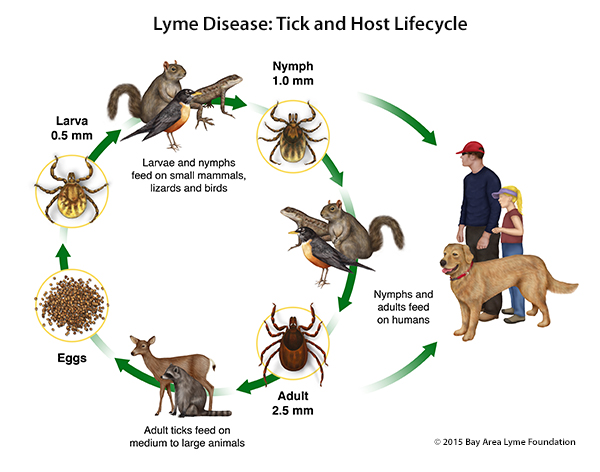It is currently thought that 75% of all Lyme disease cases are acquired from ticks picked up during activities around the home. Children, pets, and adults are at risk when playing, gardening, or exploring in the yard. But there are easy ways to reduce risk.

1. Create a Tick-Safe Zone
Ticks like the woods and areas with high humidity. Most ticks are found within 9 feet of your lawn’s edge – especially near the woods, stone walls, or ornamental plantings. Ticks do not like the sunny, manicured areas of lawns.
You can create a tick-safe zone by altering your landscape to increase sunlight and discouraging rodents from setting up house.
- Keep grass mowed
- Clear leaf litter and brush
- Consider building fences to keep out deer
- Prune trees and bushes to increase sunlight
- Move play sets away from woodland edges
- Restrict ground cover that’s close to family activities
- Try gravel pathways, decking, stone, etc., around the home
- Wildflowers and herbal gardens have very few ticks
2. Discourage Tick Reservoirs
Deer, birds, and small mammals are important to ticks. They help ticks reproduce by acting as natural reservoirs for Lyme bacteria. Don’t plant things that attract deer and consider fencing to keep them out of your yard. Position the most deer-resistant plants along the edge of your property to keep them away.
If you clean up areas that provide shelter for mice, squirrels, and chipmunks you will also reduce tick infestation. Place woodpiles away from the house and clean up stone walls regularly.

3. Apply Chemical and Natural Control Methods
There are many pesticides and insecticides that kill ticks when applied to lawns and wood shrubs around the house. Many of these pesticides are restricted to licensed commercial applicators (much like spraying your house for termites) and some could be hazardous to you, your pets, and the environment. If you choose to use pesticides — and not everyone does — use them safely and carefully. Read all instructions and precautions.
There are also many popular biological and natural control methods that are gentler on the environment and humans including fungal pathogens and plant extracts such as biopesticides. There are natural fungi that kill insects, diatomaceous earth (a natural sediment), insecticidal soaps and botanical insecticides that are allowed under the organic standards without harm to the native environment. Other organic methods include herbal-based deer repellents. Ammonia or hot sauce-based deer repellents are considered organic.
For additional guidelines, see the Centers for Disease Control and Prevention (CDC) overview on preventing ticks in your yard.